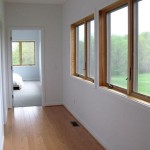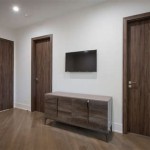Interior Room Design: Transforming Spaces into Homes
Interior room design goes beyond merely arranging furniture; it encompasses the art and science of creating functional, aesthetically pleasing, and personalized spaces within a building. It involves understanding the principles of design, client preferences, and the practicalities of a room's purpose to achieve a harmonious blend of form and function. Whether it's a cozy living room, a stimulating office, or a serene bedroom, effective room design can enhance a space's livability and reflect the occupant's unique personality and lifestyle.
Understanding the Fundamentals of Interior Design
A successful interior room design project begins with a solid understanding of fundamental design principles. These principles act as guiding stars, ensuring that every element within a space works together cohesively. Some key principles include:
1. Balance: Balance refers to the visual weight distribution within a room. This can be achieved symmetrically, where both sides of a room mirror each other, or asymmetrically, where elements of different sizes are placed to create equilibrium. 2. Proportion and Scale: The relationship between objects in a room, as well as their size relative to the space, are crucial considerations. Choosing furniture and decor that complement the room's dimensions while maintaining a sense of scale prevents feeling overwhelmed or cramped. 3. Color: Color impacts mood, atmosphere, and even the perception of space. A well-chosen color palette can create a sense of calm, excitement, or focus. Understanding the psychology of color and how different hues interact is essential to achieve the desired ambiance. 4. Texture: Textural variations can greatly influence how a room feels. Combining different textures, such as smooth, fluffy, or rough, adds depth and visual interest, preventing a monotonous look. 5. Lighting: Light plays a vital role in interior design, affecting both the mood and functionality of a space. Natural light should be maximized, while artificial light sources should be strategically placed to illuminate key areas and create desired effects.
The Design Process: Planning and Execution
The design process for a room can be customized based on the project's scope and client needs. However, a general framework typically includes the following stages:
1. Client Consultation and Needs Assessment: The process begins with a thorough discussion with the client to understand their vision, lifestyle, and budget. This stage involves gathering information on their preferred style, desired functionality, and any specific requirements or constraints. 2. Site Analysis and Measurement: Once the client's needs are understood, a site visit is conducted to analyze the space. This involves taking detailed measurements, identifying existing features, and assessing potential challenges. 3. Concept Development and Mood Boards: Based on the collected information, the designer develops a conceptual direction and creates mood boards to visualize the room's overall style and aesthetic. This stage often involves presenting options for color palettes, furniture styles, and decorative elements. 4. Design Development: Once the concept is approved, the designer develops detailed design plans, including floor plans, furniture layouts, and material selections. This stage involves refining the initial concept and incorporating any necessary adjustments based on client feedback. 5. Procurement and Installation: The design development stage leads to the procurement of furniture, fixtures, and materials. The designer may coordinate with contractors or suppliers to facilitate the purchase and delivery of necessary items. The installation process involves overseeing the placement and assembly of furniture, as well as the installation of any required lighting or finishes.
Key Considerations for Effective Room Design
Beyond the design fundamentals and process, several key considerations contribute to a successful interior room design project:
1. Functionality: The primary purpose of a room should always be considered. A well-designed space facilitates its intended use, whether it's for relaxation, work, or entertaining. Adequate storage, proper lighting, and comfortable seating are essential for creating a functional and enjoyable space. 2. Personalization: One of the most important elements of interior design is personalization. The final design should reflect the client's taste and personality, making them feel at home in their space. This can be achieved through the selection of artwork, decorative accents, and personal belongings. 3. Sustainability: In today's world, sustainable design practices are increasingly important. This includes opting for eco-friendly materials, energy-efficient lighting, and minimizing waste during the design and installation process.
Interior room design offers the opportunity to transform spaces into personalized havens that cater to both functionality and aesthetic appeal. By understanding the principles of design, engaging in a collaborative process with clients, and prioritizing functionality and personalization, interior designers can create rooms that inspire, comfort, and enhance the quality of life.

10 Simple Bedroom Designs For A Lasting Impact Designcafe

Bedroom Design Interior Designs Designcafe

Pin On Bedroom

15 Small Bedroom Design Ideas Beautiful Homes

10 Simple Bedroom Designs For A Lasting Impact Designcafe

Bedroom Interior Design Services At Rs 70 Square Feet In Ghaziabad

10 Creative Ways To Design A Small Room Maximise Space Livspace

Modern Bedroom Interior Designing At Rs 1450 Sq Ft In Bengaluru

Top 15 Beautiful And Luxury Bedroom Interior Design Ideas Of 2024

Bedroom Interior Design Ideas Pencil








